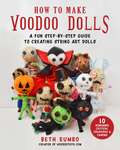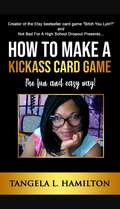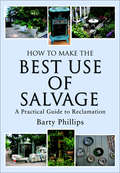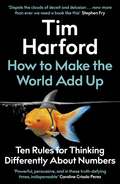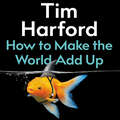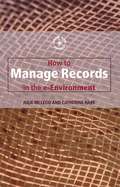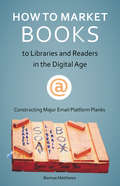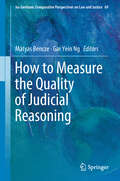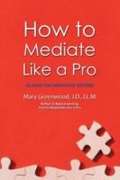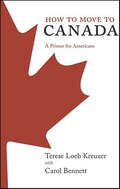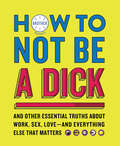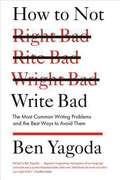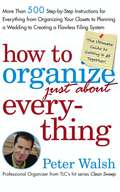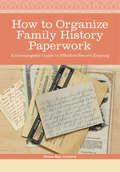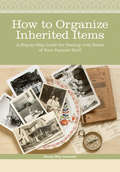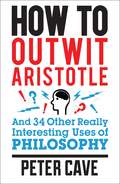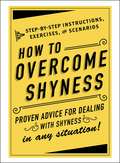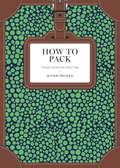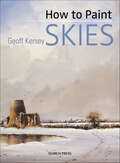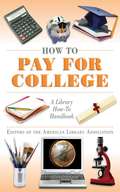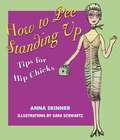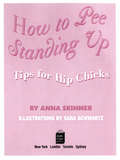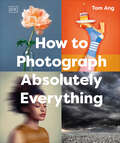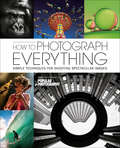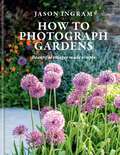- Table View
- List View
How to Make Voodoo Dolls: A Fun Step-by-Step Guide to Creating String Art Dolls
by Dr. Beth RumboA fantastically fun handbook for making DIY voodoo dolls: craft with yarn, embroidery floss, pipe cleaners, fabric paint, and more! This unofficial guide to creating fun voodoo string dolls is the first of its kind in offering step-by-step directions for making these fun and funky charms. Great for kids and adults, these easy-to-make dolls will entertain you for hours with their quirky looks and personalities. How to Make Voodoo Dolls has tons of photographs to lead you through the process of creating these cute, kooky characters, but will also prime your imagination as you start on the way to making your own creations. Learn how to make your favorite ghoulish creatures such as: SkeletonFrankensteinWerewolfDraculaAnd more! Just be careful sticking those pins as a final touch!
How to Make a Kickass Card Game!: The Fun And Easy Way!
by Tangela L. HamiltonA step-by-step guide to easily create your own card game. It comes complete with step explanations as well as web links to the same vendors used to create the Etsy bestselling card game "Bitch You Lyin'!"
How to Make the Best Use of Salvage: A Practical Guide to Reclamation
by Barty PhillipsThis book about reclamation shows whats available and why salvage is a good option for people doing up their homes or wanting to have a stylish talking point whether it s stained glass windows, a vintage garden bench, Victorian roll-top bath or an Edwardian door or tiled fire surround. It also appeals to the fast-growing green market with its recycling element, plus reclaimed goods can be great value if you know what you re doing. This is an increasingly popular aspect of the antiques world which includes garden ornaments, as well as interior and exterior housing material. Written by interior design expert and TV favourite, Barty Phillips, the author of How to Decorate Your Home without Going Broke, Daily Mail Book of Household Hints and Tips and Teach Yourself Thrifty Living, this book offers a practical guide on identifying the age of salvaged goods and how to source it and use it in your home or business. This handy book also contains a directory of specialist salvage outlets and events.
How to Make the World Add Up: Ten Rules for Thinking Differently About Numbers
by Tim HarfordThe Sunday Times Top Ten bestseller'Tim Harford could well be Britain's Malcolm Gladwell'Alex Bellos, author of Alex's Adventures in Numberland'If you aren't in love with stats before reading this book, you will be by the time you're done. Powerful, persuasive, and in these truth-defying times, indispensable'Caroline Criado Perez, author of Invisible Women In How to Make the World Add Up, Tim Harford draws on his experience as both an economist and presenter of the BBC's radio show 'More or Less' to take us deep into the world of disinformation and obfuscation, bad research and misplaced motivation to find those priceless jewels of data and analysis that make communicating with numbers so rewarding. Through vivid storytelling he reveals how we can evaluate the claims that surround us with confidence, curiosity and a healthy level of scepticism. It is a must-read for anyone who cares about understanding the world around them.'Tim Harford is our most likeable champion of reason and rigour . . . clear, clever and always highly readable'The Times, Books of the Year'Fascinating and enjoyable'Bill Bryson'Now more than ever we need a book like this'Stephen Fry'Wise, humane and, above all, illuminating. Nobody is better on statistics and numbers - and how to make sense of them'Matthew Syed'One of the most wonderful collections of stories that I have read in a long time . . . fascinating.'Steven Levitt, co-author of Freakonomics'Wise and useful . . . such a delight' Financial Times'What should we do when someone makes a claim that they say is based on data? This wise book, distilled from years of experience, gives us the ten commandments, from first examining our feelings, to finally having the humility to admit we may be wrong. Priceless'Professor Sir David Spiegelhalter
How to Make the World Add Up: Ten Rules for Thinking Differently About Numbers
by Tim HarfordThe Sunday Times Bestseller'Tim Harford is one of my favourite writers in the world. His storytelling is gripping but never overdone, his intellectual honesty is rare and inspiring, and his ability to make complex things simple - but not simplistic - is exceptional. How to Make the World Add Up is another one of his gems. If you're looking for an addictive pageturner that will make you smarter, this is your book' Rutger Bregman, author of Humankind'Tim Harford could well be Britain's Malcolm Gladwell'Alex Bellos, author of Alex's Adventures in Numberland'If you aren't in love with stats before reading this book, you will be by the time you're done. Powerful, persuasive, and in these truth-defying times, indispensable'Caroline Criado Perez, author of Invisible Women In How to Make the World Add Up, Tim Harford draws on his experience as both an economist and presenter of the BBC's radio show 'More or Less' to take us deep into the world of disinformation and obfuscation, bad research and misplaced motivation to find those priceless jewels of data and analysis that make communicating with numbers so rewarding. Through vivid storytelling he reveals how we can evaluate the claims that surround us with confidence, curiosity and a healthy level of scepticism. It is a must-read for anyone who cares about understanding the world around them.'Tim Harford is our most likeable champion of reason and rigour . . . clear, clever and always highly readable'The Times, Books of the Year 'Fascinating and enjoyable'Bill Bryson'Now more than ever we need a book like this'Stephen Fry'Wise, humane and, above all, illuminating. Nobody is better on statistics and numbers - and how to make sense of them'Matthew Syed'One of the most wonderful collections of stories that I have read in a long time . . . fascinating.'Steven Levitt, co-author of Freakonomics'Wise and useful . . . such a delight' Financial Times'What should we do when someone makes a claim that they say is based on data? This wise book, distilled from years of experience, gives us the ten commandments, from first examining our feelings, to finally having the humility to admit we may be wrong. Priceless'Professor Sir David Spiegelhalter
How to Manage Records in the E-Environment
by Julie Mcleod Catherine HareA practical approach to developing and operating an effective programme to manage hybrid records within an organization. This title positions records management as an integral business function linked to the organization's business aims and objectives. The authors also address the records requirements of new and significant pieces of legislation, such as data protection and freedom of information, as well as exploring strategies for managing electronic records. Bullet points, checklists and examples assist the reader throughout, making this a one-stop resource for information in this area.
How to Market Your Book to Libraries: Constructing Major Email Platform Planks
by Bonnye MatthewsWhat others say: If you've ever wondered how to market your book(s) to libraries, Bonnye Matthews' How to Market Your Books to Libraries and Readers in the Digital Age is a must read. It is an easy to follow, well-written, step-by-step process. I highly recommend it! Mary Ann Poll America's Lady of Supernatural Thrillers, USA This book has totally answered all of the questions I have ever had about how authors get their books into libraries. It is not just well written and informative, it is detailed and educational. Unlike so many other articles you read, this one is different as Bonnye gives you all the secrets – all the tricks of the trade – all the information you need. Irene Petteice Senior Author of Political Perspectives, USA Bonnye Matthews, writer of prehistoric fiction, has put her hand to writing a book to help writers market their books to libraries. I have read this book and I can honestly recommend it. It may sound like a simple task, but once you try it, you'll find many obstacles along the way. Bonnye indicates clearly, step by step how to go about it. The whole process from how to find the libraries's email addresses right up to the final step of sending the letters, is described in detail. Her instructions are clear and easy to follow. All aspects of the process is covered. Anyone can have success. Bonnye, like all your other books, this is a winner! Magdel Roets Writer of Christian Fiction South Africa
How to Measure the Quality of Judicial Reasoning (Ius Gentium: Comparative Perspectives on Law and Justice #69)
by Mátyás Bencze Gar Yein NgThis edited volume examines the very essence of the function of judges, building upon developments in the quality of justice research throughout Europe. Distinguished authors address a gap in the literature by considering the standards that individual judgments should meet, presenting both academic and practical perspectives. Readers are invited to consider such questions as: What is expected from judicial reasoning? Is there a general concept of good quality with regard to judicial reasoning? Are there any attempts being made to measure the quality of judicial reasoning? The focus here is on judges meeting the highest standards possible in adjudication and how they may be held to account for the way they reason. The contributions examine theoretical questions surrounding the measurement of the quality of judicial reasoning, practices and legal systems across Europe, and judicial reasoning in various international courts. Six legal systems in Europe are featured: England and Wales, Finland, Italy, the Czech Republic, France and Hungary as well as three non-domestic levels of court jurisdictions, including the Court of Justice of the European Union (CJEU). The depth and breadth of subject matter presented in this volume ensure its relevance for many years to come. All those with an interest in benchmarking the quality of judicial reasoning, including judges themselves, academics, students and legal practitioners, can find something of value in this book.
How to Mediate Like a Pro: 42 Rules for Mediating Disputes
by Mary GreenwoodHow to Mediate Like a Pro presents strategies and practical tips for the Mediation process. It will give you insight on how to deal with difficult parties, how to break an impasse and how to close the deal. After you read this book, you will be able to Mediate Like A Pro.
How to Move to Canada: A Primer for Americans
by Carol Bennett Terese Loeb KreuzerAn easy-to-use, step-by-step guide to calling Canada homeMore and more Americans are thinking of moving to Canada to find a job, attend colleges and universities, peace of mind---even retirement---and whatever their motivations, they will have to navigate the Canadian immigration, citizenship, and naturalization processes. So whether you're thinking about moving or already have your bags packed, How to Move to Canada is for you. It's a straightforward, friendly, informative handbook that delivers on its promise, providing readers with a thorough understanding of what to expect and where to get help and more information.How toMove to Canada offers:--A realistic appreciation of what Canada has to offer Americans --Snapshots of Canada's provinces and territories and their major cities --Interviews with immigration experts and Americans who have emigrated to Canada --An immigration checklist and a comprehensive list of resources to consult for more information --Real-life, hands-on perspectives, and invaluable advice How to Move to Canada makes the move north feel possible, supplying readers with a clear understanding of what they'll need in order to make a run for the border.
How to Not Be a Dick: And Other Essential Truths About Work, Sex, Love—and Everything Else That Matters
by BrotherIn this full-color, illustrated guide, the wildly popular lifestyle brand Brother offers the definitive handbook to navigating life and becoming a somewhat respectable human beingLife can be complicated. From the classroom to the bedroom, the office to the DM, we could all use a little guidance—young guys especially. No one actually wants to be dick, but from time to time, everyone is. How do we know? Because we at Brother have spent years studying dickishness in all its forms, and we’re finally ready to present our findings, including:-The terrible people you should avoid at all costs-How to make more money (without working all that hard)-The dos and don'ts of sex-How to not be a dick at the gym-Acceptable coping mechanisms for adults-How to get your sh*t together in 10 stepsAnd so much more. Don’t worry, there are plenty of illustrations, too.
How to Not Write Bad: The Most Common Writing Problems and the Best Ways to Avoid Them
by Ben YagodaBen Yagoda's How to Not Write Bad illustrates how we can all write better, more clearly, and for a wider readership. He offers advice on what he calls "not-writing-badly," which consists of the ability, first, to craft sentences that are correct in terms of spelling, diction (word choice), punctuation, and grammar, and that also display clarity, precision, and grace. Then he focuses on crafting whole paragraphs-with attention to cadence, consistency of tone, sentence transitions, and paragraph length. In a fun, comprehensive guide, Yagoda lays out the simple steps we can all take to make our writing more effective, more interesting-and just plain better. .
How to Organize (Just About) Everything
by Peter WalshProfessional organizer Peter Walsh presents this witty and enormously practical guide to getting it -- and keeping it -- all together. With more than 500 easy-to-follow how-to instructions,How to Organize (Just About) Everythingis packed with shrewd advice and insider tips to make your home, your workplace -- indeed, every imaginable aspect of your life -- run more smoothly. Step-by-step solutions help even the most organizationally challenged take on:KidsSchedulesStoragePhotosListsPoliticsEducationRemodelsMealsWeddingsFinancesHolidaysPartiesVacationsEmergencies
How to Organize Family History Paperwork: A Genealogist's Guide to Effective Record Keeping
by Denise May LevenickFamily history research can quickly create mountains of paperwork. This book give you step-by-step instruction to effectively organize and digitize your genealogy research papers.You'll learn how to:create a personalized filing system to suit your genealogy research style and experienceturn your computer into a top-notch filing clerk and research assistant by establishing a clear, consistent naming pattern for files and foldersScan old paper records and store them electronically to save space and make them easier to findmake digital copies of original source documents organize your family history research to pass on to future generations
How to Organize Inherited Items: A Step-by-Step Guide for Dealing with Boxes of Your Parents' Stuff
by Denise May LevenickIn every family, someone ends up with Mom's and Dad's "stuff" - a lifetime's worth of old family photos, papers, and memorabilia packed into boxes. This book gives step-by-step instructions for organizing inherited items in a way that honors the loved one while bringing peace to the rest of the family.You'll learn how to:Effectively sort and purge boxes of your parent's stuff that you inheritedDecide which family heirlooms to keepDonate items to museums, societies, and charitiesProtect and pass on keepsakes
How to Outwit Aristotle
by Peter CaveEverything you ever wanted to know about philosophy in 35 bite-size chapters: From the realm of the unconscious to the principles of logic, How to Outwit Aristotle will help you think like a philosopher. Witty and accessible, this is a superb introduction to the subject by one of Britain's most engaging philosophical writers.
How to Overcome Shyness: Step-by-Step Instructions, Exercises, and Scenarios
by Adams MediaLearn how to overcome shyness and increase your confidence in common social situations with this simple and approachable guide.In today&’s world, we have come to rely so heavily on technology to communicate that it has led to increased anxiety for many when talking face-to-face. In How to Overcome Shyness, you&’ll learn to step away from distractions, overcome your shyness, and be more successful and comfortable in social situations. With real-world examples, brief exercises, and simple tips, you&’ll become more confident communicating in all situations from dating to work to large social events and parties.
How to Pack: Travel Smart for Any Trip
by Hitha PalepuIt’s time to pack perfect. Every trip, every time. Your journey starts here. When you travel, the journey is just as important as the destination—and packing is the first step. In How to Pack, Hitha Palepu, a former consultant who has traveled more than 500,000 cumulative miles around the world, shows that what and how you pack are who you are. Confidence and comfort inspire success upon arrival, whether you’re exploring a new city, hoping to nail a job interview, or relaxing on a beach. In How to Pack, you’ll learn about: · Power Pieces vs. Fantasy Pieces: How clothing earns its place in your suitcase · The Accessory Math Secret: The precise formula for all you need to finish off your outfits · Folding versus Rolling: What’s right for which items · Globetrotter Gorgeous: Editing your beauty routine while still looking great · The Packing Timeline: How to avoid “I’m forgetting something” syndrome · Pack Perfect Lists: Samples and blanks for any kind of trip
How to Paint Skies
by Geoff KerseyCreative advice and guidance for exploring the artistry in painting a variety of sky scenes.Skies are an important part of landscape paintings, setting the tone of the scene as a whole and often representing the dominant feature of the composition. In this revised and updated edition of Painting Skies which includes material from Top Tops for Watercolor Artists, Geoff Kersey imparts his knowledge and expertise to artists of all abilities, demonstrating how to paint skies that give a sense of cohesion, place and atmosphere to your landscape paintings.Painting skies is also the best way to learn how watercolor behaves, and there is a large section at the start of the book that explains the techniques you need to produce a broad range of effects, including a stormy sky, a summer sky, an evening glow, a sunset and low cloud. This comprehensive guide also includes information on the materials you need, drawing and sketching, using photographs, composition, color and perspective, and throughout the book are examples of Geoff’s finished artworks to provide inspiration and ideas for compositions of your own. The book finishes with six glorious, step-by-step projects to put into practice all you have learnt and give you the confidence to incorporate stunning skies into your own watercolor landscape paintings.
How to Pay for College: A Library How-To Handbook (American Library Association Series)
by Editors of the American Library AssociationWhether you're a high school student, already in college, a parent, or an adult returning to school, this guide can help you thoroughly and easily research all available financial aid options, narrow your search to those that are a good fit for you, and make the best attempt possible at applying for them. Within these pages, find ways to plan and save for the high cost of college tuition; how to look for schools that are less expensive yet offer everything an expensive school might; when and how to fill out forms for loans, grants, and scholarships; how to get the government to help you; tips on applications and essays; and much more. This unique guide emphasizes the help that your local library can be in this process, using its reference materials, the Internet, and the advice of experienced researchers. This is a book that can help change your life.
How to Pee Standing Up
by Anna Skinner Sara SchwartzStuck with a boss from hell? Trying to escape a bad date? Looking for a way to fix a friendship, or make it through your next family reunion? Believe it or not, the solutions to each of these dilemmas (and many more!) can all be found in this book. You'll also pick up tips on scoring a table for two at the swankiest spots in town, redecorating your place on a shoestring budget, and getting your hands on a super cheap plane fare. You'll even learn how to get out of credit card debt once and for all, how to shake a devastating break-up -- and, of course, how to pee standing up. Packed with loads of advice that every hip chick needs to sail through those sticky situations,How to Pee Standing Upis your must-have guide to life. In fact, we don't know how you've made it this far without it!
How to Pee Standing Up
by Anna SkinnerStuck with a boss from hell? Trying to escape a bad date? Looking for a way to fix a friendship, or make it through your next family reunion? Believe it or not, the solutions to each of these dilemmas (and many more!) can all be found in this book. You'll also pick up tips on scoring a table for two at the swankiest spots in town, redecorating your place on a shoestring budget, and getting your hands on a super cheap plane fare. You'll even learn how to get out of credit card debt once and for all, how to shake a devastating break-up -- and, of course, how to pee standing up. Packed with loads of advice that every hip chick needs to sail through those sticky situations, How to Pee Standing Up is your must-have guide to life. In fact, we don't know how you've made it this far without it!
How to Photograph Absolutely Everything (DK Tom Ang Photography Guides)
by Tom AngThis practical guide from photography expert, Tom Ang, will help you achieve the best shot possible in every scenario – from creating a silhouette to impromptu still lifes. In our online world, taking a good photograph has become an essential life skill.Full of essential advice, hints, and tips, How to Photograph Absolutely Everything gives you straightforward step-by-step guidance on what equipment you will need, the best approach for each subject, how to think about composition and find the right light, and how to frame each shot effectively. Checklists allow you to focus on what is important, while “tricks of the trade” show you how to turn a good picture into an amazing one.From cityscapes to landscapes, and tackling children’s parties to capturing the magic of seasonal celebrations, How to Photograph Absolutely Everything is the essential guide to improving your digital photography skills and getting the most out of your digital camera (or smartphone).
How to Photograph Everything: Simple Techniques for Shooting Spectacular Images
by The Editors of Popular PhotographyThis gorgeously illustrated guide covers simple techniques for stunning photography of all kinds—from weather to wedding and aerial to underwater. The world is full of breathtaking images just waiting to be captured. How to Photograph Everything shows you how to approach thrilling subjects and get the picture-perfect shot you&’re after. The editors at Popular Photography show you exactly how shoot and enhance photos of more than forty subjects—from landscapes to wedding portraits, sporting events, fireworks, and extreme weather. Filled with ideas for shooting, must-have gear guides, 500 beautiful photographs and the simple step-by-step guidance you need to reproduce them, How to Photograph Everything will help you get the best shot, every time. Subjects include: Aerial photography, Animals, Arts & Architecture, Fireworks, Nudes, Portraits, Still Lifes, Street Photography, Underwater photography, Weather, and Weddings.
How to Photograph Gardens: Beautiful images made simple
by Jason IngramLearn how to take spectacular shots of every type of garden, all year round, with this definitive guide.Whether you want to create professional images of your own garden, snap Instagram-worthy shots with your iPhone, or learn the best ways to showcase your landscaping business or hobby, this book has it all.Using techniques developed through 25 years of professional success, award-winning photographer Jason Ingram will teach you how to understand light, stabilise photos and skilfully edit images that truly showcase the essence of any garden.ESSENTIAL GEAR AND EQUIPMENT: Gain an overview of the best camera, lenses and accessories to pack in your bag.MASTERING LIGHT: Explore the methods for manipulating natural light, from beginner to advanced.COMPOSITION TIPS AND TRICKS: Combine styling hacks and camera skills for sensational compositions.ACCESSING PUBLIC GARDENS: Learn how to gain permission to the most magical garden's for photography.POST-PROCESSING AND EDITING: Be introduced to photo editing software that enhance your favourite shots.With clear, concise, and comprehensive instructions suitable for every skill level, this book will guide you through every stage of creating extraordinary garden photographs.
